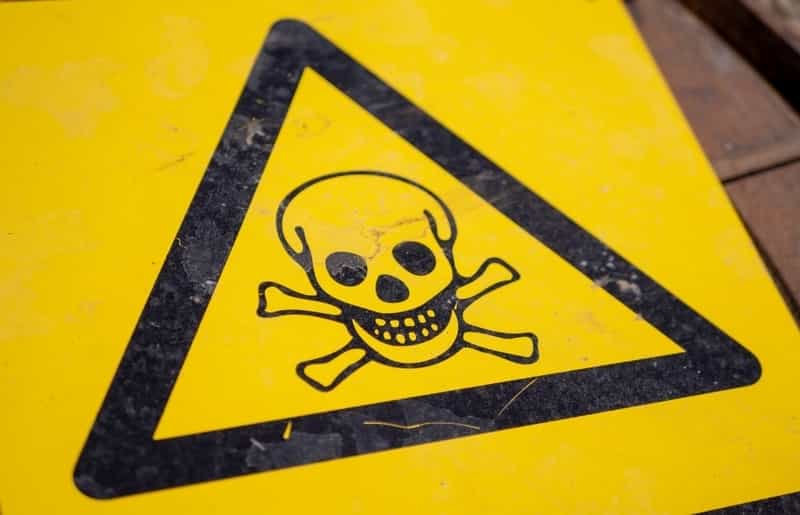Heavy metals like mercury, cadmium, arsenal, lead, and chromium are dispersed in the earth’s crust, atmosphere, and even underwater. Hence, it is nearly impossible to prevent complete contact. However, it is essential to be mindful of these materials due to their dangers to human wellbeing.
Most frequently, accidental, occupational, and environmental instances expose humans to heavy metals. While plants absorb heavy metals from soil and water sources, these toxins find their way into the food chain through the process of bioaccumulation, a continuous buildup of chemicals within organisms. Over time, the food chain has become an overly exploited segment of toxins’ exposure.
However, adequate knowledge of toxic metals, side effects of exposure, and practice of cautionary measures can prevent life-threatening consequences. At this point, it is fair to speculate the severity of heavy metal exposure to the human body. Specifically, it is about knowing the quantity and duration of the exposure that inflicts life-risking consequences.
Well, any amount and duration of exposure are dangerous. It is important to note that consumption beyond specified doses can cause varying impairments. In severe cases, consumers may suffer from multiple organ failures that result in loss of life.
Following are some of the many reasons to stay away from heavy metals and toxic materials.
1. Prompting cardiovascular ailments
Scientific studies advocate a close association between cardiovascular diseases and prolonged exposure to toxic elements. Experts validate that prolonged exposure to heavy metals can further increase risk factors for patients already suffering from chronic conditions like diabetes and hypertension.
Specifically, heavy metals impair cardiovascular function through the oxidative influence of free radicals. The free radicals modify and degenerate lipids and enable the buildup of low-density lipoprotein (LDL). The outcome of this oxidative damage of fats results in the formation of plaque within our cells. Subsequently, the plaque formation causes cell inflammation and eventually leads to atherosclerotic ¬¬– the buildup of cholesterol inside arteries.
Gradually, lumps of fat solidify and contract arteries, disturbing blood supply to various organs. Hence, deficiency of oxygenated blood can hinder the functions of several organs. In addition, lack of oxygen-rich blood to tissues can even create conditions for hazardous infections attacks.
2. Metabolic disturbance
Lethal contact with heavy metals not only initiates acute onset of symptoms but causes deeply penetrated disturbances. For instance, the most readily occurring symptoms of ingestion of toxic metals include nausea, motion, and stomach ache.
Furthermore, metal toxicity can cause damage at the cellular level. Notably, free radicals and their oxidative damage protein and DNA (deoxyribonucleic acid) inside the cells.
As such, intake of arsenic disturbs cells’ functions, such as their respiration and division. In addition, exposure to lead disturbs the natural mechanism of detoxification, which is essential to repair free radical-induced oxidative destruction within cells.
Lead poisoning is also known to interrupt various functions on a cellular level, such as communication between cells, enzymes’ regulation, and apoptosis.
3. Triggering cognitive impairments
Studies report that the toxicity of heavy metals is higher in patients with cognitive impairments than those without.
Frequent exposure to heavy metals may inflict severe damage to the intellectual functions of the body. For instance, methylmercury, a variant of mercury, enters and disperses to the nervous system through absorption in the blood. After distribution, it binds with neuroreceptors and neurotransmitters and induces discrepancy between chemicals prompting oxidative stress and antioxidants. Resultantly, the imbalance triggers cognitive dysfunction.
For example, mercury and its compound mainly impact the human brain. Mercury endorses the buildup of neurotoxins, such as serotonin, inside the brain. However, it can also disturb the functions of muscles, nerves, and kidneys. The most frequently reported symptoms of cognitive damage of mercury poisoning include headaches, incoordination, memory loss, and hallucinations.
4. Impediments in the reproductive system
Over the last couple of decades, anthropogenic activities have released extensive toxins into the environment. One of the side effects of such actions is the infertility rate among terrestrial and aquatic species, equally harming the human population.
Studies suggest that exposure to mercury, cadmium, and lead affects human reproduction organs. Notably, higher toxicity impairs ovary functions, such as follicular growth and ovum formation. Likewise, toxins impact sperm morphology, their count, and movement pattern in the testis.
Toxins-induced consequences on human reproduction include pre-mature childbearing, spontaneous abortion, and stillbirth. In addition, heavy metals prompt the development of several diseases dependent on estrogen, a sex hormone, including breast cancer and uterine malignancy.
5. Failure of vital organs
Prolonged and the most adverse outcome of lethal exposure to heavy metals results in organ failure. For instance, inhalation of vaporous methylmercury readily dissolves in mucous membrane lining and lungs causing respiratory problems.
Later on, the condition may progress to chronic asthma. In severe cases, a lethal dose can induce pneumonia, where deterioration of the alveoli can lead to the failure of the lungs.
On the other hand, prolonged exposure to mercury causes irreparable damage to the brain and eventual death. Similarly, heavy doses of metals and exposure to toxic materials like asbestos interrupt heart function and damage lungs, leading to terminal diseases.
As such, atherosclerosis in advanced stages can be detrimental, causing cardiac attack, stroke, or heart failure. Furthermore, atherosclerosis impacts arteries of the heart, affects the brain, kidney, and peripheral organs. As a result, a multi-organ impairment may follow, leading to terminal consequences.
Conclusion
Heavy metals are present around the world. Over time, rigorous human interaction through several daily activities has further increased exposure to living organisms. In return, consciousness awareness of heavy metals and toxic materials has increased significantly.
Masses are now cautiously investing efforts to prevent carcinogenic consequences of toxic elements. Even though it is challenging to avoid complete contact, sufficient awareness, lifestyle changes, and sustainable practices can minimize the terminal effects of heavy metals.


